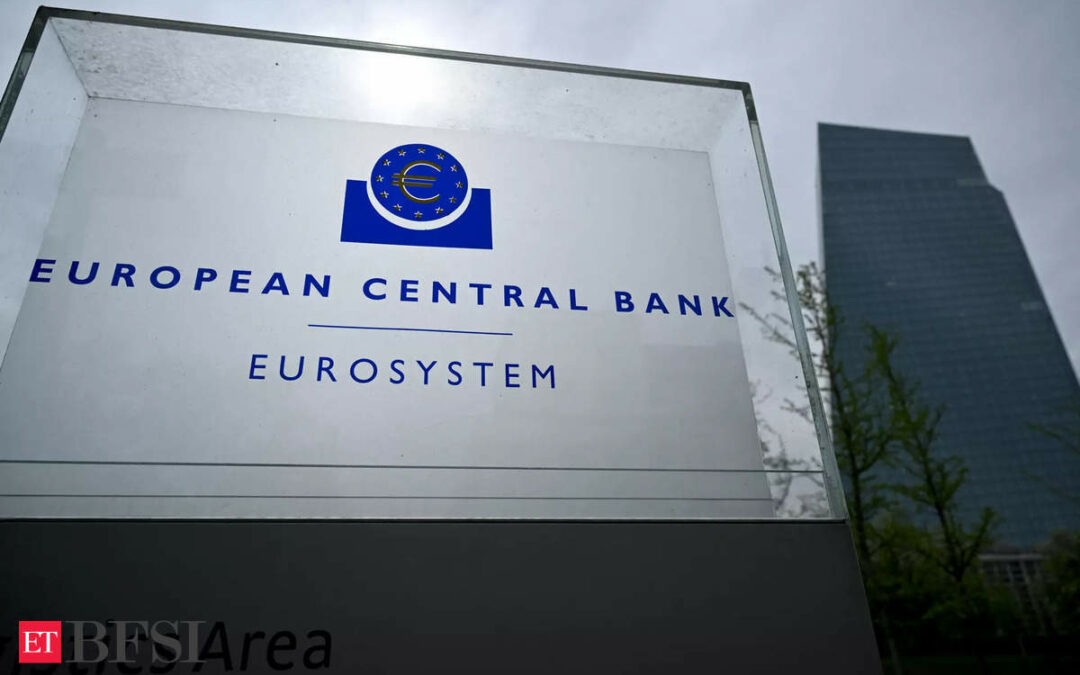MILAN – Investors who have snapped up high-yielding Italian bonds over the last year on the assumption they were protected from risk by the European Central Bank are now taking a close look at the ECB’s rulebook to gauge whether their investment is safe.
The central bank presented its Transmission Protection Instrument (TPI) in mid-2022 as a tool to counter any “unwarranted” widening of bond spreads among the 20 euro zone countries.
The scheme, by which the bank would step in to buy the bonds of a country under market attack, has never been used, but analysts say its presence as a backstop encouraged investors to favour high-debt Italy despite its wayward state accounts.
Those public finance difficulties are now coming to a head, however, and they could make the euro zone’s third largest economy ineligible for the TPI, with big implications for Italian bond buyers.
With the yield gap between Italian 10-year BTPs and German Bunds currently hovering around just 1.4 percentage points (140 basis points), there is no near-term prospect of the TPI being used, but markets are looking ahead.
“The TPI has done its job so well for the past two years that even a hint that just some ECB officials consider Italy ineligible for support would make its bonds much more vulnerable,” said Tim Jones, euro zone analyst at Medley Advisors.
Italy said this month it would face a European Commission “excessive deficit procedure” (EDP) this year due to its persistent fiscal overshoots.
This prompted a flurry of notes by investment banks to clients because one of the ECB’s criteria for activating the TPI is that countries must not be subject to an EDP or, if they are, must have taken the required corrective action.
WIGGLE ROOM
The picture is not clear-cut, however. Most analysts spoken to by Reuters say the ECB has left itself enough wiggle room to use the tool if markets attack Rome’s 2.9-trillion-euro ($3.09 trillion) public debt, threatening euro zone stability.
In its July 2022 statement on the TPI, the bank listed a raft of criteria for eligibility but said these would merely be “input” into its decision-making and would be “dynamically adjusted to the unfolding risks and conditions to be addressed.”
Some analysts suggest that to receive TPI support a country need not meet all the ECB’s requirements for “sound and sustainable fiscal and macroeconomic policies”, but must merely meet one of them.
“If Italy were to be in an Excessive Deficit Procedure, but to reduce its deficits in line with what is requested by Brussels, then the country would still be eligible for the TPI,” said Chiara Zangarelli, European economist at Morgan Stanley.
This still leaves open the question of whether, to obtain TPI support, Rome would have to have taken corrective measures or would just need to promise them.
ECB President Christine Lagarde, when questioned on the TPI after last Thursday’s rate-setting meeting, said being under an EDP was an “alternative condition” that would be taken into account in assessing whether a country was eligible.
An ECB spokesperson said this meant no country would be disqualified solely because it was subject to an EDP.
Luca Mezzomo, head of macroeconomic analysis at Intesa Sanpaolo, said the prospect of the Italian-German 10-year bond spread widening because of worries about Italy’s eligibility for TPI would be “highly irrational.”
DEBT PROBLEM
So is Italy out of the woods? Not necessarily.
Rome’s multi-year economic plan issued last week projected the public debt, already proportionally the second highest in the euro zone, would rise further through 2026, making it hard to comply with EU requirements without tough corrective action.
The International Monetary Fund forecast in its World Economic Outlook on Tuesday that the debt would continue to climb all the way to 2029, reaching 144.9% of national output from the 137.3% posted last year.
Franziska Palmas, senior economist at Capital Economics, said these problems meant there was a strong chance the mood towards Italy “will turn more sour in the next year or so.”
This could happen sooner if the ECB slows the pace of rate cuts currently priced in by markets, increasing Rome’s borrowing costs and making it even harder for it to curb its debt.
Some signs of this may already be emerging, with the US Federal Reserve pushing back its own easing cycle because of stickier-than-expected inflation.
With the ECB due at the end of this year to close the PEPP bond purchase scheme it launched during the COVID-19 pandemic, markets may price in the possibility the TPI will be activated at some point, said Fabio Balboni, senior economist at HSBC.
“Markets might then want to test at what level the ECB would be willing to use its discretion to activate the TPI regardless of whether a country meets the requirements,” he said. ($1 = 0.9396 euros)











